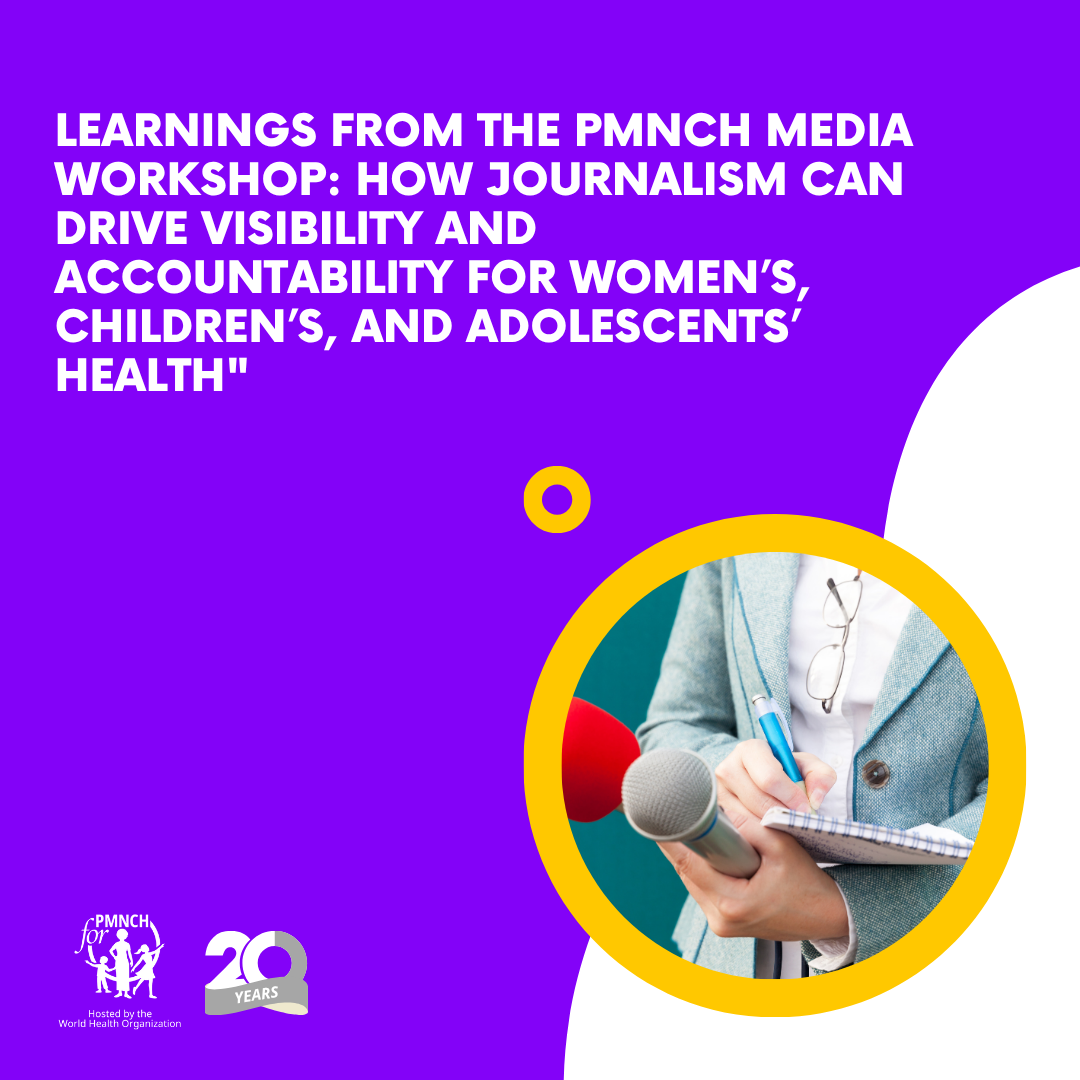Report on the Role of Media in Advancing Health-Related Sustainable Development Goals
Introduction: Media as a Driver for Visibility and Accountability
A global discussion convened by the Partnership for Maternal, Newborn and Child Health (PMNCH) examined the critical role of journalism in elevating the visibility of and accountability for women’s, children’s, and adolescents’ health (WCAH). The findings underscore that strategic media engagement is a vital intervention for achieving Sustainable Development Goal 3 (SDG 3): Good Health and Well-being. The report outlines key challenges and strategic recommendations for leveraging journalism to accelerate progress on health-related SDGs.
Key Findings on the State of Health Journalism
Challenging the Myth of Audience Disinterest
A primary finding is the debunking of the long-held newsroom belief that health stories lack audience appeal. Evidence from initiatives like the “Healthy Nation” supplement in Kenya demonstrates significant public demand for well-researched health content. This indicates a missed opportunity to engage the public on critical issues central to achieving SDG 3 targets.
- Reader surveys consistently rank health as a top-desired news topic, contrary to editorial assumptions.
- Dedicated health journalism can increase circulation and public engagement, making health a national priority.
- Intentional, well-resourced health reporting is essential to translate complex health data into compelling narratives that resonate with the public.
Media Independence and its Link to SDG 16
Editorial independence was identified as a cornerstone for effective health accountability journalism. Political and corporate influence often constrains reporting on sensitive topics like health budget allocation, directly impeding progress towards SDG 3. This challenge highlights the importance of SDG 16: Peace, Justice and Strong Institutions, particularly Target 16.10, which calls for ensuring public access to information and protecting fundamental freedoms.
- Financial dependence on political or corporate patrons often leads to the suppression of accountability reporting.
- Truly independent media is necessary to scrutinize government commitments and expenditures related to WCAH.
- Without editorial integrity, journalism cannot effectively serve as a watchdog, weakening public health systems.
The Role of Data in Driving SDG Progress
The discussion emphasized that empathetic storytelling must be anchored in robust data to be effective. Accessible, transparent, and timely data is crucial for journalists to report on health inequities and track progress towards SDG 3 targets, such as reducing maternal and child mortality. The consensus was that data does not diminish human stories but rather illuminates them, transforming awareness into urgency.
- Journalists require disaggregated data to expose disparities and hold institutions accountable.
- Behind every statistic related to SDG 3 is a human story that depends on effective communication and action.
- When data is fragmented or inaccessible, accountability evaporates, and policy change stagnates.
Strategic Recommendations for Enhancing Media’s Impact
Fostering Multi-Sectoral Partnerships (SDG 17)
Collaboration between journalists, civil society organizations, and health experts was framed as essential infrastructure for building a robust media ecosystem. Such partnerships align with SDG 17: Partnerships for the Goals, creating a synergistic effect where different sectors work together to achieve common objectives. These collaborations strengthen, rather than weaken, journalistic independence by providing resources and expertise.
Benefits of Strategic Partnerships:
- Provide journalists with access to credible budget data and subject-matter experts.
- Amplify the advocacy efforts of civil society organizations, increasing their policy influence.
- Build mutual capacity, equipping reporters with the tools to create sharper, more impactful stories that drive change.
Advancing Gender Equality in Media (SDG 5)
A significant barrier to effective WCAH coverage is the gender gap within the news industry itself. The underrepresentation of women in reporting and leadership roles means that stories relevant to their communities are often overlooked. Addressing this “market failure” is crucial for achieving SDG 5: Gender Equality and ensuring that media content accurately reflects societal needs. When women’s voices and expertise are equally represented, audiences grow, and trust in media increases.
Adopting a Solutions-Oriented Accountability Framework
The report recommends that journalism move beyond simply exposing problems to actively tracking outcomes and spotlighting solutions. This approach reframes journalism as a continuous accountability loop between citizens and institutions.
- Follow-through Reporting: Journalists should revisit communities to report on whether promises related to health services have been kept.
- Solution-Focused Stories: Highlighting successful interventions offers a constructive narrative that can inspire policy replication.
- Sustained Civic Pressure: This model converts public awareness into sustained pressure, ensuring that progress on SDG 3 becomes a tangible, ongoing story.
Conclusion: Investing in Journalism as a Public Health Intervention
The insights from the discussion confirm that investing in the capacity, independence, and safety of journalists is a highly scalable and effective public health intervention. A thriving, ethical, and well-supported media is indispensable for building the accountability structures needed to achieve the Sustainable Development Goals. By telling the human stories behind the data, journalism can ensure that progress in women’s, children’s, and adolescents’ health remains at the forefront of the global agenda.
Analysis of the Article in Relation to Sustainable Development Goals
1. Which SDGs are addressed or connected to the issues highlighted in the article?
The article discusses several interconnected issues that are relevant to four specific Sustainable Development Goals (SDGs):
- SDG 3: Good Health and Well-being: The core subject of the article is the importance of media coverage for “women’s, children’s, and adolescents’ health.” It directly mentions critical health issues such as “maternal deaths” and “newborn health,” which are central to SDG 3.
- SDG 5: Gender Equality: The article addresses gender equality within the media industry itself. It highlights the “gender gap of reporters – up through leadership” and argues that increasing the representation of women in newsrooms leads to better and more desired content, thereby promoting women’s participation and leadership.
- SDG 16: Peace, Justice and Strong Institutions: The article emphasizes the role of journalism in promoting accountability and transparency. It discusses the need for “truly independent media” to report on “health budgets” and act as a “living accountability loop between citizens, governments, and institutions,” which is a cornerstone of building strong and accountable institutions.
- SDG 17: Partnerships for the Goals: The text strongly advocates for collaboration to improve health journalism. It points to the success of “partnerships between journalists and civil society” in providing reporters with “credible budget data and context” to “drive policy change,” highlighting the importance of multi-stakeholder partnerships.
2. What specific targets under those SDGs can be identified based on the article’s content?
Based on the issues discussed, the following specific SDG targets can be identified:
- Under SDG 3 (Good Health and Well-being):
- Target 3.1: By 2030, reduce the global maternal mortality ratio to less than 70 per 100,000 live births. The article explicitly states that “every unreported maternal death… is a missed opportunity for justice,” linking media coverage directly to this target.
- Target 3.2: By 2030, end preventable deaths of newborns and children under 5 years of age. The focus on “newborn health” and the general theme of women’s and children’s health align with this target.
- Under SDG 5 (Gender Equality):
- Target 5.5: Ensure women’s full and effective participation and equal opportunities for leadership in all levels of decision-making. The article points to the “gender gap of reporters – up through leadership” and quotes Jeanne Bourgault saying, “Getting the right people in the right seat makes a fundamental difference.”
- Under SDG 16 (Peace, Justice and Strong Institutions):
- Target 16.6: Develop effective, accountable and transparent institutions at all levels. The article describes journalism as a tool to “expose the gaps” in health budgets and create an “accountability loop,” which contributes directly to making institutions more transparent.
- Target 16.10: Ensure public access to information and protect fundamental freedoms. The discussion on the need for “truly independent media” free from political influence and the importance of journalists having access to “transparent, accessible, and timely data” is central to this target.
- Under SDG 17 (Partnerships for the Goals):
- Target 17.17: Encourage and promote effective public, public-private and civil society partnerships. The article champions this by quoting Dr. Aminu Magashi Garba, who frames “collaboration” and “partnerships between journalists and civil society” as essential for building capacity and driving policy change.
3. Are there any indicators mentioned or implied in the article that can be used to measure progress towards the identified targets?
The article implies several indicators that can be used to measure progress:
- For SDG 3 Targets: The article’s reference to “maternal deaths” and “newborn health” as data points directly implies the use of official health statistics.
- Indicator 3.1.1 (Maternal mortality ratio): Mentioned through the phrase “maternal deaths.”
- Indicator 3.2.2 (Neonatal mortality rate): Implied by the focus on “newborn health.”
- For SDG 5 Targets: The discussion on representation in newsrooms suggests metrics for gender balance.
- Indicator related to 5.5.2 (Proportion of women in managerial positions): This is implied by the concern over the “gender gap of reporters – up through leadership.” The proportion of women in editorial and leadership roles in media houses would be a direct measure.
- For SDG 16 Targets: The article’s focus on media independence and accountability points to indicators of institutional strength and freedom.
- Indicator related to 16.10.2 (public access to information): The article implies this through its call for journalists to have access to “transparent, accessible, and timely data,” especially on health budgets. The degree of this access can be measured.
- Media Independence: The article’s concern that many media houses “are really not” independent implies that the level of political influence on media ownership and content is a key, albeit qualitative, indicator.
- For SDG 17 Targets: The value of collaboration is a recurring theme, suggesting a way to measure partnership effectiveness.
- Indicator related to 17.17.1 (Amount of United States dollars committed to public-private and civil society partnerships): The article implies a qualitative version of this by highlighting the number and effectiveness of partnerships between media and civil society organizations that lead to “sharper” stories and “drive policy change.”
4. Table of SDGs, Targets, and Indicators
| SDGs | Targets | Indicators (Identified or Implied in the Article) |
|---|---|---|
| SDG 3: Good Health and Well-being |
3.1: Reduce global maternal mortality. 3.2: End preventable deaths of newborns and children under 5. |
Indicator 3.1.1 (Maternal mortality ratio): Directly referenced by the term “maternal deaths.” Indicator 3.2.2 (Neonatal mortality rate): Implied by the focus on “newborn health.” |
| SDG 5: Gender Equality | 5.5: Ensure women’s full and effective participation and equal opportunities for leadership. | Proportion of women in leadership/managerial positions in media: Implied by the discussion of the “gender gap of reporters – up through leadership.” |
| SDG 16: Peace, Justice and Strong Institutions |
16.6: Develop effective, accountable and transparent institutions. 16.10: Ensure public access to information and protect fundamental freedoms. |
Level of media independence from political influence: Implied by the concern that media owners’ “political interests” restrict reporting. Public and media access to government data (e.g., health budgets): Implied by the need for “transparent, accessible, and timely data.” |
| SDG 17: Partnerships for the Goals | 17.17: Encourage and promote effective public, public-private and civil society partnerships. | Number and effectiveness of partnerships between media and civil society: Directly mentioned as a way to give reporters “access to credible data and local experts” and “drive policy change.” |
Source: pmnch.who.int







